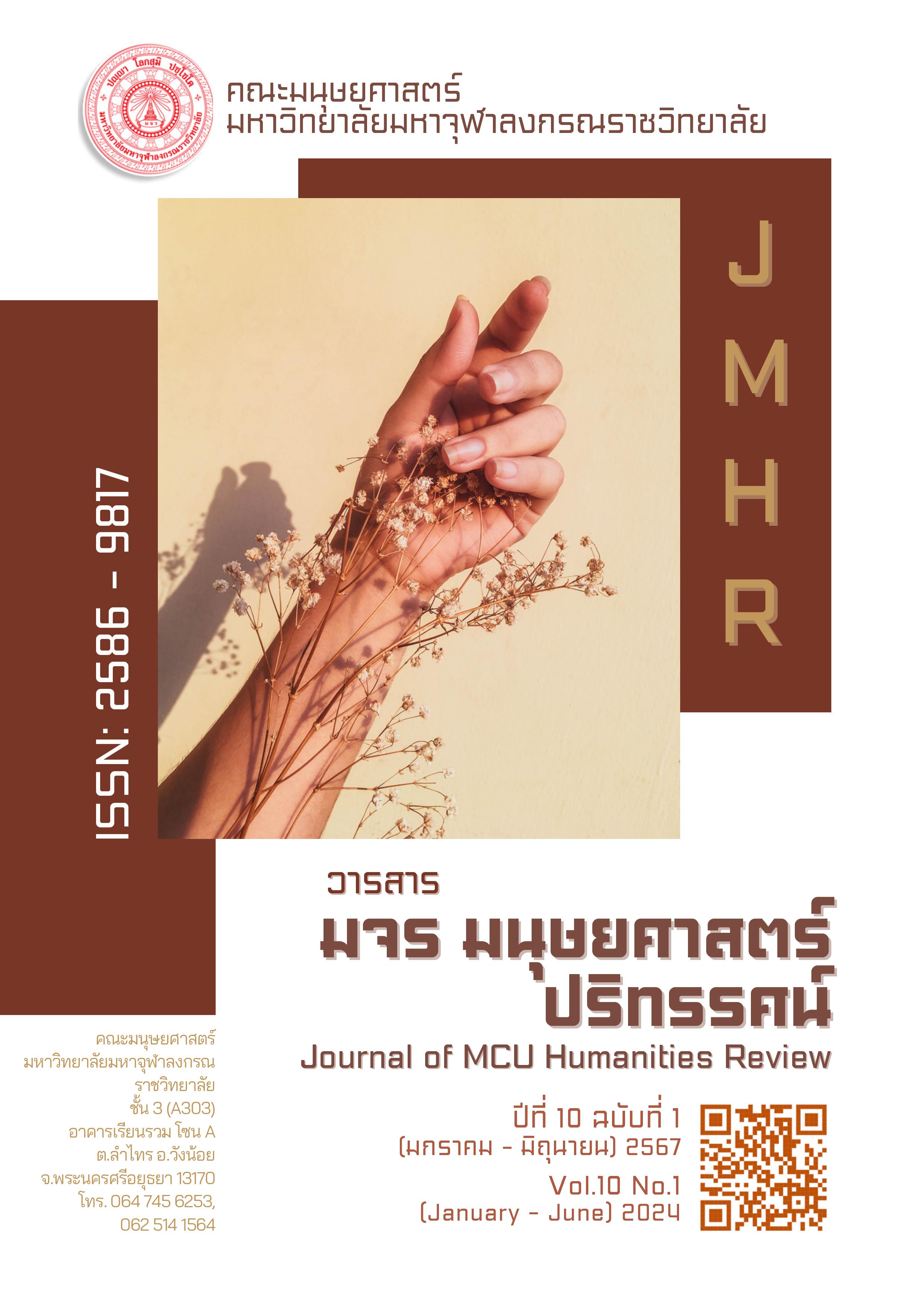A Comparative Study of Morphological English and Pāli Language
Keywords:
Comparative Study, English Morphology, Pāli MorphologyAbstract
This study aims to compare compared the similarities and differences between English and Pāli morphemes, words formation and word classes which based on English and Pāli prefix, suffix, infix, circumflexes and word formation. The study is a qualitative research, using an in-depth interview to collect data from English and Pāli morphological scholars. A content analysis is used for analyzing the data. The findings of the study are found that both Pāli and English languages consist of prefixes. In attaching systems both are the same because both of the prefix types possess negative prefixes. But negative Pali prefixes are less than English negative prefixes. The most differences between these two prefix types are oppositeness-signaling and adverseness-signaling. Both of the morphologies also include positive prefixation but in Pāli morphology possesses more prefixations than English morphology. Both types of the prefixation process are the same in modification. In Pāli morphology, positive prefixes can change original root word of meanings but in English, positive prefixes do not change any meaning but only modify. Pāli and English also consist of comparative suffixes. In Pāli morphology, there are five suffixes mostly used in adjectives. In English also clearly exists comparative suffixes which are only used in adjective forms. Pāli morphology has particular suffixes for pronominal forms but in English, there is no particular suffixes for pronominal forms. Pāli and English morphology involve adverbial suffixes and both are same in the process. Pāli and English ordinal suffixes are mostly same because in English, all ordinal numbers also carry a suffix individually. The infix between English and Pāli morphological notions possess very different usages. In Pāli morphology consist of very widely apparent infixes. In Pāli morphology, infixes exit apparently. In English morphology, there is no apparent infix but English are expletive infixes. Both English and Pāli have circumfixation very widely and both are mostly same in morphological construction.
References
Bomhard, Allan R. (2018). An Introductory Grammar of the Pāḷi Language. US: Charleston Buddhist Fellowship Press.
Hamawand, Zeki. (2011). Morphology in English: Word Formation in Cognitive Grammar. New York: Continuum International Group Press.
Jones, Sir Willian. (2011). Orientalist Jones. UK: Oxford University Press.
Khanetnok, Preecha (Assoc.Prof.Dr.). (2018). An Introduction to Linguistics. Thailand: Mahachulalon-kornrajavidyalaya University Press.
Kulikov, Lionid. (2013). Language vs. Grammatical Tradition in Ancient India: How real was Pāṇinian Sanskrit?. India: Ghent University Press.
Matellan, Acedo. (2010). Argument structure and the syntax-morphology interface: A case study in Latin and other languages. Spain: University of Barcelona Press.
Norman, K.R.. (1983). The Pāḷi Language and the Theravādin Tradition. U.S.A: University of Cambridge Press.
Siegel, Dorothy C. (2015). Topics in English Morphology. U.S.A: Brandeis University Press.
Siegel, Mark and Kirsten Fudeman. (2005). What is Morphology?. UK: Blackwell Publishing Ltd Press.
Yindee, Phramaha Phryson. (2018). A Contrastive Study of Pali and English. India: Kannada Studies University Press.
Downloads
Published
How to Cite
Issue
Section
License
Copyright (c) 2024 Journal of MCU Humanities Review

This work is licensed under a Creative Commons Attribution-NonCommercial-NoDerivatives 4.0 International License.






